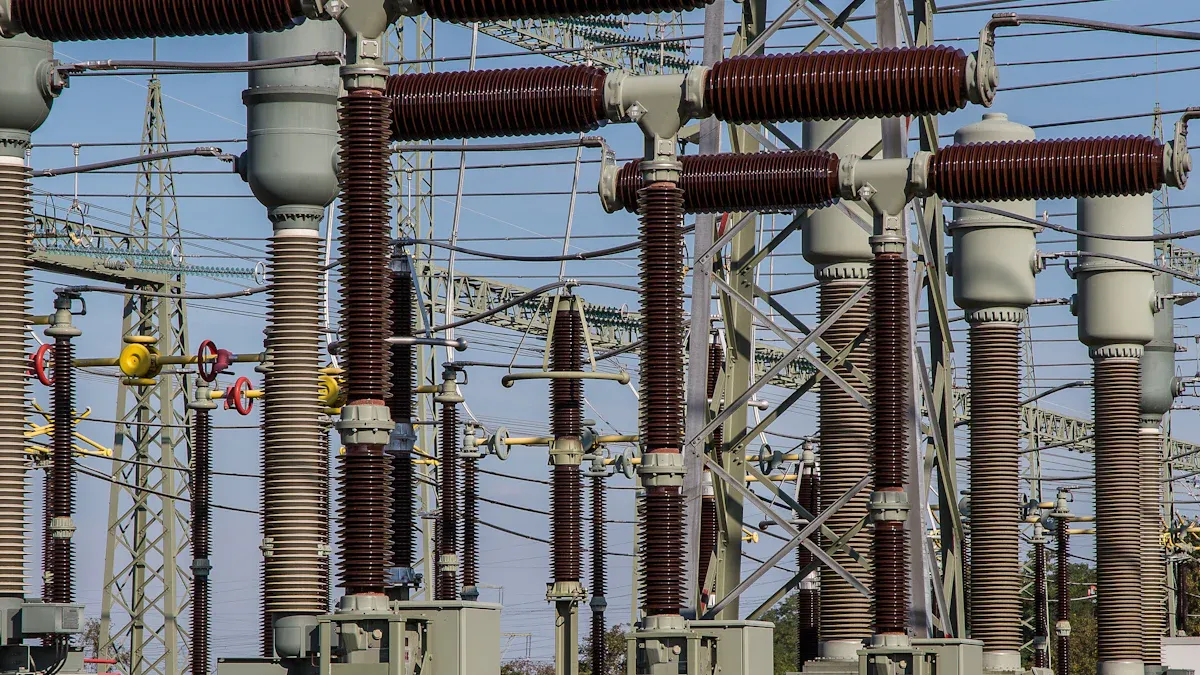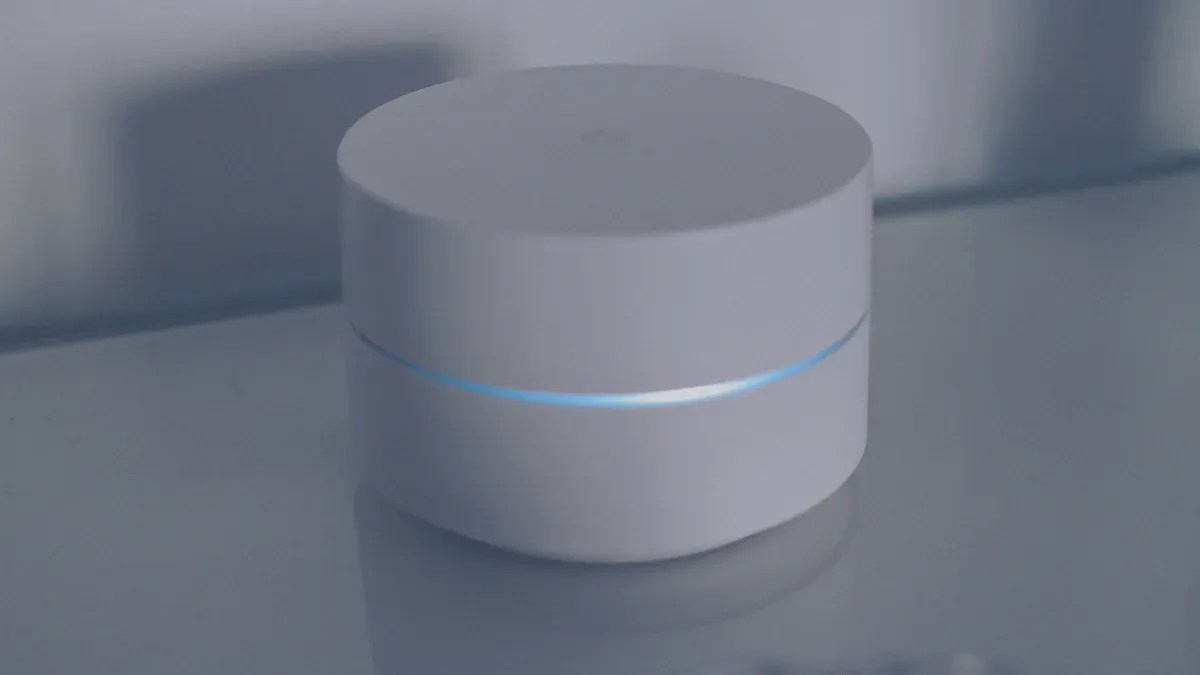
Silicon steel is used for transformer cores because it has high magnetic permeability and low core loss. This makes transformers work better and last longer. Magnetic permeability shows how easily magnetic lines go through a material. Core loss means energy is wasted as heat during each cycle.
|
Factor |
Description |
|---|---|
|
Silicon Content |
Rules set how much silicon is used to lower magnetic permeability and cut losses. |
|
Magnetic Flux Density |
The design sets magnetic flux density based on transformer voltage and frequency. |
|
Hysteresis & Eddy Losses |
There are limits on losses to stop too much heat and wasted energy. |
|
Compliance Standards |
Transformers must follow rules like IEC and IEEE for quality and working together. |
Silicon steel lets magnetic fields move through it easily. This makes transformers smaller and work better.
Silicon in the steel helps stop energy loss. It lowers hysteresis and eddy current losses. This keeps transformers cooler and saves power.
Thin sheets of silicon steel are put together in layers. This stops large electric currents inside the core. It helps reduce heat and makes transformers work better.
Silicon steel does not cost too much and works well. It gives good efficiency and lasts a long time without high costs.
Transformers with silicon steel cores work well with different loads. They last longer and help save both energy and money.

Magnetic permeability shows how easily magnetic lines move through a material. Silicon steel has very high magnetic permeability. This means magnetic fields pass through the core with little resistance. Makers add about 3% silicon to steel by weight. This makes the steel better for magnets and cuts down on heat loss.
High magnetic permeability lets transformer cores carry more magnetic flux. They do not need a big core.
Grain-oriented electrical steel is a special kind of silicon steel. Its grains line up in one direction to make permeability even better. This helps cut energy loss and makes transformer cores smaller and lighter.
The regular crystal structure in silicon steel helps lower core losses. It also works well for many transformer designs.
Note: High magnetic permeability in silicon steel means transformers can be smaller and work better. This saves space and money.
Saturation flux density is the most magnetic field a material can take before it stops working well. Silicon steel has a high saturation flux density, up to about 2 Tesla. This is much higher than ferrite or amorphous metal alloys. That makes silicon steel great for big power transformers that need strong magnetic fields.
When a transformer works close to its saturation flux density, it can use a smaller core area. This means less iron is needed and winding lengths are shorter. That lowers copper losses. But if the core goes past its saturation point, it can get too hot and lose efficiency. Most transformers use silicon steel at a flux density between 1.6 and 1.8 Tesla. This helps balance how well they work and how efficient they are.
New ways to make steel, like cold-rolled grain-oriented steel, have made saturation flux density better and cut losses. These changes help silicon steel support small, strong transformer designs.
|
Property |
Silicon Steel Value |
Impact on Transformer Cores |
|---|---|---|
|
Magnetic Permeability |
Up to 50,000 (at 10,000 Gauss) |
Lets magnetic flux move easily |
|
Saturation Flux Density |
Up to 2 Tesla |
Allows smaller cores, handles big loads |
|
Core Loss |
Low (with grain orientation) |
Makes transformers work better, less heat |
Tip: Using silicon steel with high saturation flux density and magnetic permeability helps makers build transformers that are strong and work well.

Hysteresis loss happens when the magnetic field in a transformer core changes direction many times each second. Every time the field switches, some energy turns into heat. This loss depends on the magnetic properties of the material and how fast the field changes. In transformers, silicon steel has much lower hysteresis loss than regular steel. For example, 2.5% silicon steel has a hysteresis loss coefficient of about 93.89 Ws/(T²·m³). At 50 Hz and a peak flux density of 2.75 Tesla, the power loss density can reach 13,750 W/m³. This means hysteresis loss gets bigger when the frequency or the magnetic field strength goes up.
When silicon is added to iron, it changes how the atoms are arranged. This lowers the magnetocrystalline anisotropy constant and magnetostriction. Because of this, the material becomes magnetically softer and loses less energy each cycle. Grain orientation in silicon steel helps even more by making it easier for magnetic domains to switch direction. These changes help transformers stay cooler and work better.
Note: Lower hysteresis loss means less energy is wasted and transformers last longer.
Eddy current loss happens when changing magnetic fields make small loops of electric current inside the core. These currents waste energy as heat. Silicon steel transformer cores use two main ways to lower this loss: making the resistivity higher and using thin, insulated sheets called laminations.
Thin sheets break up the paths for eddy currents. Each sheet has insulation, so big loops cannot form.
Most silicon steel transformer cores use sheets about 0.35 mm thick. This thickness helps reduce loss and is good for making transformers.
Grain-oriented silicon steel with the right lamination can cut core losses by up to 66% compared to other types.
Amorphous alloys can lower iron losses even more, but silicon steel is still used most because it balances cost and performance.
Laminated silicon steel sheets help transformers work well by stopping big eddy currents and lowering heat.
Electrical resistivity shows how much a material stops electric current from flowing. Adding silicon to steel makes its resistivity higher. Higher resistivity makes it harder for eddy currents to form, so less energy turns into heat. This makes transformers work better and last longer.
Higher resistivity means less eddy current loss and less heat.
Transformers with high-resistivity cores can handle bigger loads without getting too hot.
Better resistivity helps transformers last longer.
|
Property |
Effect on Transformer Core |
|---|---|
|
Higher resistivity |
Less eddy current loss, less heat |
|
Increased efficiency |
Lower energy waste, longer life |
|
Better reliability |
Handles higher loads safely |
Tip: Picking materials with high electrical resistivity, like silicon steel, is important for safe and efficient transformers.
Transformers with silicon steel cores work well in power systems. High magnetic permeability lets magnetic fields move through the core easily. This means less energy is needed to magnetize and demagnetize the core. Transformers lose less energy as heat. Laminated sheets stop eddy currents, so energy loss is lower. These things help transformers run efficiently, even when loads change. Engineers use numbers like permeability, core loss, and thermal stability to check core quality. Rules like IEC 60404-8-4 set limits for these things to make sure transformers work well.
High magnetic permeability helps energy move better.
Low core loss means less heat and better efficiency.
Stable performance with different loads keeps transformers working well.
Transformers with silicon steel cores help big power grids save energy and cut costs.
Silicon steel is a cheap choice for transformer cores. The material is easy to find and simple to make. This keeps production costs down. Silicon steel costs less than special materials like amorphous alloys or grain-oriented electrical steel. Some special steels work better, but they cost more to make. For many jobs, silicon steel gives good performance at a low price. It can be recycled, which makes it even more useful for manufacturers.
|
Aspect |
Silicon Steel Cores |
Amorphous Core Transformers |
|---|---|---|
|
Upfront Cost |
Lower |
Higher |
|
Manufacturing |
Simple |
Complex |
|
Good (94%) |
Excellent (95-98%) |
|
|
Long-term Cost |
Moderate |
Lower (due to energy savings) |
|
Suitability |
Budget projects, general use |
High-efficiency, green projects |
Silicon steel transformer cores last a long time and work well. The material does not rust and keeps its magnetic properties at high temperatures. This means transformers need less fixing and last longer. Cooler operation helps parts last longer, too. Even when loads change, silicon steel cores keep energy loss low and work steadily. These features make them a good choice for small and big electrical systems.
Lower energy loss means cooler transformers and longer life.
Less fixing saves time and money.
Steady performance helps keep power safe and stable.
Engineers pick transformer core materials for important reasons. High magnetic permeability helps magnetic flux move easily. More electrical resistivity means fewer eddy current losses. High saturation flux density lets transformers work with strong magnetic fields. Good mechanical strength and durability make transformers last longer. Less magnetostriction means transformers are quieter. Cost-effectiveness helps save energy and money over time.
|
Benefit |
Impact on Transformers |
|---|---|
|
Low core losses |
Better efficiency, less heat |
|
Thermal stability |
Reliable use, longer life |
|
Laminated structure |
Fewer eddy current losses |
The material engineers choose affects how well transformers work, how reliable they are, and how steady they run.
Silicon steel is mostly iron with about 3% silicon. Makers add silicon to make it better for magnets. This helps cut down on energy loss. Silicon steel is good for things like transformer cores.
Engineers use thin sheets to stop big eddy currents. Each sheet has insulation to block current loops. This design keeps transformers cooler and helps them work better.
Silicon steel has high magnetic permeability and electrical resistivity. These features help transformers waste less energy as heat. Transformers with silicon steel cores stay cooler and last longer.
Silicon steel does not rust as easily as plain steel. The silicon makes a layer that protects the surface. This layer helps stop corrosion during normal use.
Some transformers use amorphous metal or ferrite cores. These materials can have lower losses but usually cost more. Silicon steel is still the most popular choice because it works well and costs less.
By continuing to use the site you agree to our privacy policy Terms and Conditions.